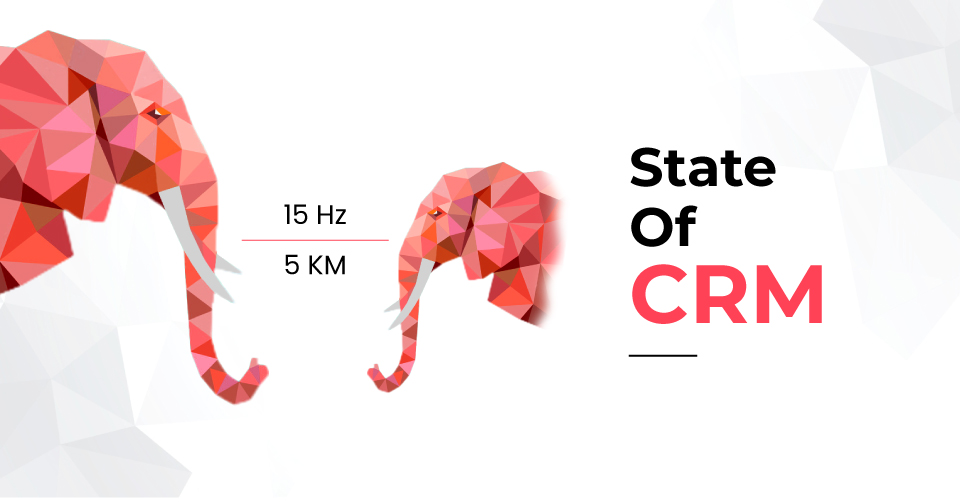Big Data, AI, and ML have become buzzwords in recent years, with companies and organizations of all kinds touting the importance of collecting as much data as possible. However, while the sheer volume of data can be impressive, it is not the most important factor in determining the usefulness of that data. In fact, good data is the basis on which big data, analytics, or AI/ML can deliver any useful insight. At Paramantra, we establish good data as information obtained through a sourcing method that effectively mitigates the inherent bias typically associated with manual data entry.
Applied to customer interactions, CRM software has relied on users keying in information and, even more critically, their interpretation of the interaction for decades. In basic communication models, “Noise” is an inherent element that exists alongside the “message” itself. In communication cycles where messages are transmitted from multiple sources to numerous receivers, without adequate checks and balances to preserve the integrity of the content, the likelihood of noise contaminating the actual message is significantly increased.
In this context, a form of noise (referred to as “deviation”) was permitted to disrupt the average deviation. With each subsequent communication cycle, we strayed further away from the average, eventually rendering the original message irretrievable.
Young’s modulus (E), also known as the Young modulus or the modulus of elasticity in tension or compression (i.e., negative tension), is a mechanical property that measures the tensile or compressive stiffness of a solid material when the force is applied lengthwise. It quantifies the relationship between tensile/compressive stress (force per unit area) and axial strain (proportional deformation) in the linear elastic region of a material and is determined using the formula:
E = σ/ ε
where:
E = Young’s Modulus
σ = stress, or uniaxial force per unit surface
ε = strain, or proportional deformation
A tiny value in E suggests more elasticity and vice versa. For example, Aluminum is stiffer than Silly Putty as it can withstand higher pressure without experiencing much stress. In simplified terms, Young’s Modulus helps us determine the maximum stretch length of something before it breaks.
When it comes to the data or information about your customer interactions stored in your CRM, the quality of the data is crucial. If the data is prone to bias, flawed, or unreliable, it becomes challenging to derive meaningful insights that remain intact. A deviation introduced at an early stage of data sourcing can trigger a series of deviations as we perform more mathematical/analytical operations. The operations performed on an already skewed data set can further increase the deviation from the mean. As subsequent operations are applied, we observe even more deviation from actuality. In the context of data related to customer strategy, a minute deviation from the mean could trigger a catastrophic change at a later stage.
Manually created data needs to be cross-verified, stripped of all agendas and biases, and verified at every stage for it to have a low “E” for multiple analyses – a task easier said than done in the context of CRM data. Unless you restrict yourself to the analysis of data related to transactions, which could be done by working on financial software, we need to question what the machine is learning, the “artificial” behind the intelligence, and inquire down to the atomic/subatomic level about the source and origin of the data or insight.
By design, Paramantra allows you to collect customer interaction-related information with the least dependence on manual data entry. When information is manually entered in Paramantra, we ensure it is not susceptible to biases. This enables you to process the information and develop insights based on good data. Here are some techniques and areas of our work that rely on processing this good data:
- Predictive Analytics: Analyzing CRM data to predict customer behavior, such as churn prediction, lead prioritization, propensity signals, and sales forecasting.
- Natural Language Processing (NLP): Applying NLP techniques to extract insights from unstructured data, such as customer feedback, emails, chats, call transcripts, and social media interactions, to improve sentiment analysis and customer understanding.
- Customer Segmentation: Utilizing advanced clustering techniques to segment customers based on their characteristics, behavior, and interactions, to gain a better understanding of customer segments and newer perspectives on how to define segmentation based on the end goal of inquiry.
- Voice and Speech Processing: We have integrated voice recognition and speech-to-text capabilities since 2011, using state-of-the-art machine learning techniques to study sentiments, propensity, as well as using transcription and tone analysis to create communication models for customer-facing teams.
The path to good data passes through interoperability, where all your customer-facing functions talk to each other systemically, and where information about every aspect of customer interaction is intrinsically stored in the CRM platform for any analysis to occur meaningfully.


